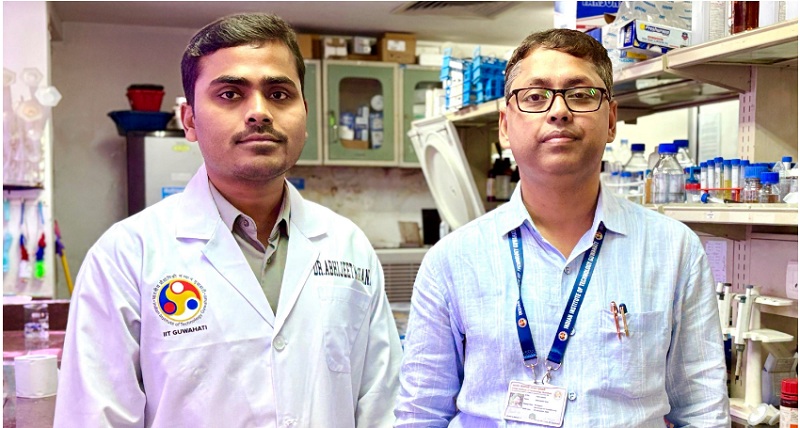Guwahati: Researchers at the Indian Institute of Technology Guwahati (IITG) have developed a natural technique to remove lead from contaminated water using cyanobacteria — photosynthetic microorganisms related to bacteria.
The innovation provides a low-cost and sustainable solution to one of the world’s most persistent environmental challenges.
The findings of this research have been published in the prestigious Journal of Hazardous Materials, in a paper co-authored by Prof. Debasish Das, Professor, Dept. of Bioscience and Bioengineering, along with his postdoctoral fellow, Dr. Abhijeet Mahana, and Prof. Tapas K. Mandal, Dept. of Chemical Engineering, IIT Guwahati.
On a global level, lead is one of the most toxic pollutants, affecting over 800 million children, with approximately 275 million in India. It commonly enters water through industrial discharge, agricultural runoff, and old water pipelines. Once a water resource is contaminated with lead, it remains for decades, accumulating in living organisms and causing severe neurological, cardiovascular, kidney, and developmental problems.
The conventional methods, such as chemical treatment and synthetic adsorbents used for removing lead, are generally expensive and often generate secondary pollutants.
To address this, IIT Guwahati researchers used bioremediation, a natural process in which microorganisms clean contaminated environments.
These microorganisms naturally exist in soil and water and help in restoring ecological balance. To achieve this, the research team employed a light-dependent lead-bonding cyanobacterial species, “Phormidium corium NRMC-50”. The team researched the different parts of the cyanobacterium to examine which of the components were the most efficient in absorbing and removing the lead contaminants.
As a result, the study found that exopolysaccharides, or EPS, a part of the cyanobacterium, exhibited the highest lead removal efficiency of 92.5% from contaminated water.
Prof. Debasish Das, Dept. of Biosciences and Bioengineering, IIT Guwahati, said, “These cyanobacterial biosorbents require minimal energy input and can be scaled without sophisticated infrastructure, making them more affordable for widespread application.”
“Preliminary estimates suggest that the overall cost of treatment using our method is approximately 40–60% lower than that of conventional techniques, while maintaining comparable or even superior efficiency in metal removal. This economic advantage, coupled with its eco-friendly nature, positions our approach as a sustainable alternative for industries and municipalities seeking affordable solutions to contamination,” he added.
The researchers further showed that cyanobacteria provide several environmental advantages, including the ability to absorb pesticides, herbicides, hydrocarbons, synthetic dyes, and various industrial chemicals. The metals captured by these microorganisms can later be recovered and converted into value-added products such as biochar, bioplastics, and biofuels.
Since these microorganisms are self-replicating, inexpensive, and rely only on sunlight, carbon dioxide, and minimal nutrients, they present a sustainable alternative to the synthetic adsorbents currently used worldwide.
ALSO READ: Mizoram, Assam to hold first-ever border festival to boost inter-state ties
As the next phase, the research team aims to scale up the technology from a laboratory setup to a pilot-scale treatment system and evaluate its performance in real wastewater environments.














